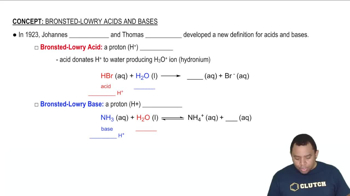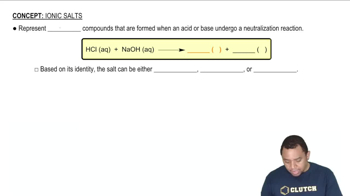Here are the essential concepts you must grasp in order to answer the question correctly.
Acid-Base Theory
Acid-base theory explains how substances can donate or accept protons (H+ ions). According to the Brønsted-Lowry theory, acids are proton donors, while bases are proton acceptors. Understanding this concept is crucial for predicting the behavior of substances in solution, particularly how they affect the pH of the solution.
Recommended video:
Bronsted-Lowry Acid-Base Theory
Hydrolysis of Salts
When salts dissolve in water, they can undergo hydrolysis, where the ions react with water to produce acidic or basic solutions. For example, cations from weak bases or anions from strong acids can lead to acidic solutions. In the case of AlCl3, the aluminum ion can hydrolyze to form H+ ions, contributing to acidity.
Recommended video:
pH Scale
The pH scale measures the acidity or basicity of a solution, ranging from 0 (very acidic) to 14 (very basic), with 7 being neutral. A solution with a pH less than 7 is considered acidic, while a pH greater than 7 is basic. Understanding the pH scale is essential for predicting the nature of solutions formed by different substances, including salts like AlCl3.
Recommended video:




